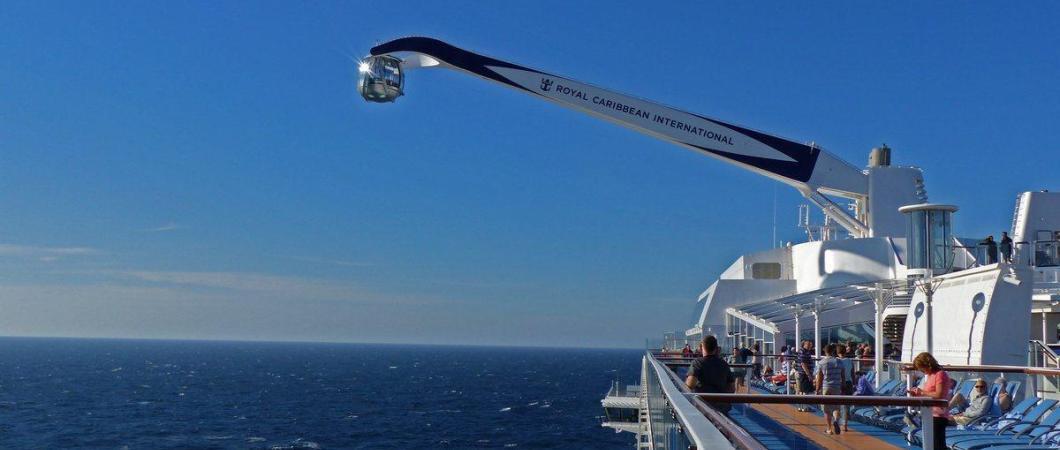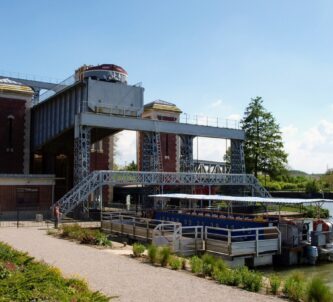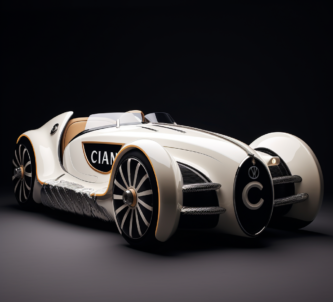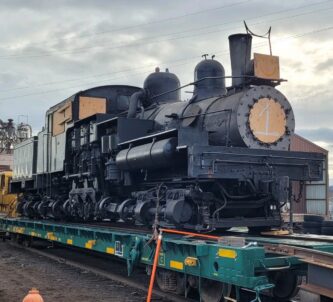Any nautical engineers or ship designers out there, who know the answer?
We’ve all been enjoying the sight of Celebrity Edge being delivered and now embarking on her first cruises. Her stand-out (literally) feature is the ‘Magic Carpet’ – “the world’s first cantilevered, floating platform” that rises up the starboard side of the ship from sea level to the top deck.
It reminded me of Royal Caribbean Cruise Lines’ Northstar viewing pod, which can be found on Quantum of the Seas, Anthem of the Seas and Ovation of the Seas. The pod, carrying up to 14 guests + operator, can be swung over the side of the ship.
It’s got me wondering, and I can’t find the answer anywhere.
My question is this: On ships like this, with large steel constructions dangling over the side, is the stability of the ship inherent or dynamic?
In other words, in order to maintain the stability of the ship while these things are moving, do they need to be simultaneously pumping ballast (water/fuel) around?
Or is the weight of these objects, even fully loaded with guests, insignificant to the inherent stability of the ship?
Answers on a postcard…. or below!








So, in the case of Celebrity Edge, it seems to be inherent.
I guess that makes sense. Obviously cruise ships are inherently stable to start with. I’m genuinely not trying to scaremonger or anything. That would be ridiculous. When did we last hear of a cruise ship capsizing? It doesn’t happen. Cruise ships 1) float and 2) stay upright.
But I am interested in the effects of moving mass. Northstar and Magic Carpet may be comparatively small masses but they move and with them, to some small degree, the centre of gravity must move.
There’s another example. I was wondering about that moment when a cruise ship leaves or arrives in a port and the large majority of passengers all move to one side of the ship to watch. That must have a noticeable impact on balance, doesn’t it?
Well, do the math (somebody pick me up if I’ve got this wrong)…
Edge’s max capacity is 2,900 guests (ignore the crew, they are scattered about the ship evenly at their stations). But that is all cabins filled with two people or more. Let’s say typically there might be 2,000 on board, and as they sail past, say, the Statue of Liberty, 1,200 (probably fewer) go to the rail to watch. The average weight of an adult is 62 kilos (137 lbs). So 74,400 kg or 73 tons (82 US tons) of humans gravitate to one side of the ship. Yes, that’s less that the weight of the Magic Carpet (92 tons), but the ship is already balanced for Magic Carpet at at least one of her positions (I’m guessing the top). So what’s the effect of 73 tons moving to the side of the ship? Negligible? 2% list? 4%? Does anyone notice?
Well, I’ve had some answers, but on Twitter, not here, so for the benefit of those who didn’t see them…
I asked, via Twitter, Cruise Writer, Dave Monk, who’s just been on Celebrity Edge for the Metro (London newspaper). He said: “I believe the short answer is, relative to size, weight and stability of the ship, something like Magic Carpet (90 tons) is light, though adjustments were made in design, eg the pool, to balance it out.”
… which got picked up and added to by Celebrity Cruises’ President & CEO, Lisa Lutoff-Perlo: “You are right, @shipmonk The ship is so well balanced that the Magic Carpet does not need a counterweight. Thanks for asking @alastairmck!”